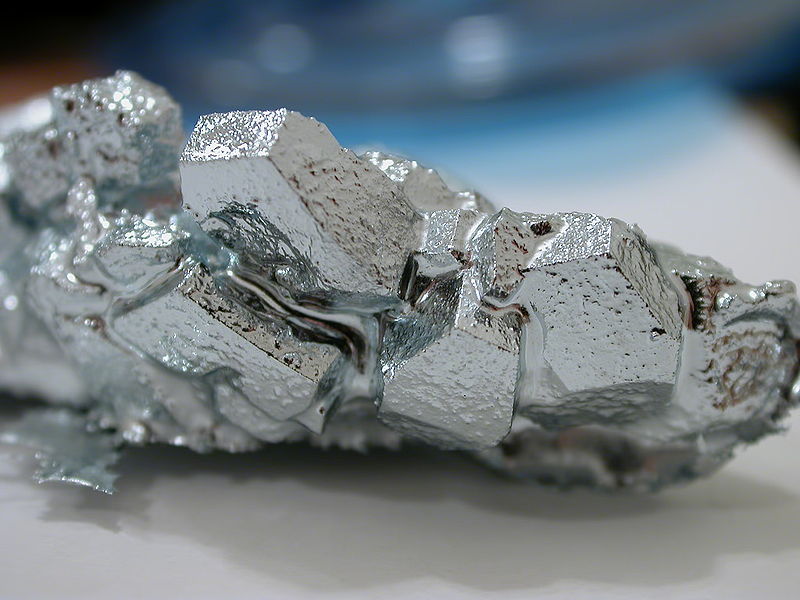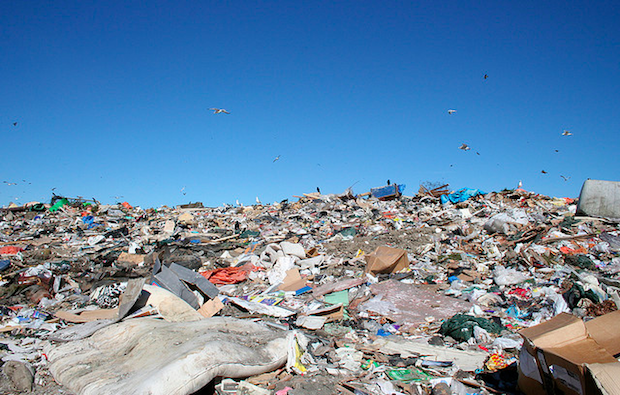SportsArt’s S770 Pinnacle Trainer is an Energy-Generating Exercise Machine!
by: Inhabitat , 2011-05-31 21:38:11 UTC

Hitting the gym is about to get a whole lot greener as SportsArt Fitness just unveiled an energy-generating exercise machine that produces watts as you work out! The company’s new S770 Pinnacle Trainer features a kinetic energy-generating design that feeds excess electricity back into the power grid. The machine can generate up to 2,000 watts during use, and it can potentially save up to $3,000 in utility bills each year.



Read the rest of SportsArt’s S770 Pinnacle Trainer is an Energy-Generating Exercise Machine!
Permalink |
Add to
del.icio.us |
digg
Post tags: Bob Baumgartner, eco design, environmental design, environmental sustainability, green design, green exercise, green exercise equipment, green workout, green workout machine, S770 green system, S770 Pinnacle Trainer, SportsArt Fitness, SportsArt Fitness Equipment
SOFT Rocker uses solar to top up your gadgets while you relax
by: Gizmag Emerging Technology Magazine, 2011-05-30 14:24:58 UTC

There's nothing quite like an old rocking chair for finding your center and chilling out. Originally thought to have been developed as garden furniture, the rocker has now come full circle with the development of the SOFT Rocker by Professor Sheila Kennedy and architecture students from MIT. Installed at the Institute's Killian Court for the Festival of Art+Science+Technology (FAST), the teardrop-shaped outdoor rocking lounge chairs have solar panels over the top to provide power for up to three USB devices, and some after-dark lighting to allow the party to go on after the sun goes down...
Continue Reading
SOFT Rocker uses solar to top up your gadgets while you relaxTags: Furniture,
MIT,
Rocking,
Solar
Related Articles:


 Limiting global temperature rise to 2 degrees now looks impossible
Limiting global temperature rise to 2 degrees now looks impossible
by: Gizmag Emerging Technology Magazine, 2011-05-31 08:56:32 UTC

Last year at the UN climate change talks in Cancun, it was agreed that cutting emissions sufficiently to limit the world’s temperature increase to 2°C would require a far‑reaching transformation of the global energy system. To limit the world’s temperature increase to 2°C, it was agreed that the long-term concentration of greenhouse gases in the atmosphere would need to be limited to around 450 parts per million of carbon-dioxide (CO2). Sadly, the
International Energy Agency has just released figures indicating that energy-related CO2 emissions in 2010 were the highest ever, reaching 30.6 Gigatonnes (Gt). This means that to achieve the 2020 target, where emissions must not be greater than 32 Gt, emissions will need to rise less over the next ten years in total than they did between 2009 and 2010. ..
Continue Reading
Limiting global temperature rise to 2 degrees now looks impossibleTags: Atmosphere,
Energy,
Temperature
Related Articles:


 There Will Be No Clean Tech Economy Without More Recycling
There Will Be No Clean Tech Economy Without More Recycling
by: fast company, 2011-05-31 17:46:52 UTC
The rare metals that go into clean technology are already in short supply. Without a way to get them out of our old electronics, we could run out before we know it.

Try as we might, it's impossible to fashion wind turbines, solar panels, and electric vehicles out of thin air. These technologies are complex, and many different materials go into their production. The problem is, a lot of the necessary metals aren't recycled at the end of their lives--and that could lead to shortages in the future, putting the entire clean technology sector at risk.
The news comes from a new UN report, which explains that under one-third of 60 recyclable metals have an end-of-life
recycling rate above 50%. And 34 elements--many of which are crucial for clean technology--have recycling rates of less than 1%. This may not seem like a big deal now, but mined metals are a limited resource. As these materials become more scarce, we will see increases in land disruption, water impacts, energy use, and of course, cost.
In the case of rare earth metals (i.e. specialty metals like tellurium and selenium, which are used for ultra-efficient solar cells), there is no way to tell how close we are to shortages because we don't know how much of a supply we have.
"By failing to recycle metals and simply
disposing of these kinds of metal, economies are foregoing important
environmental benefits and increasing the possibility of shortages," explained Thomas Graedel, a professor of industrial ecology at Yale University, in a statement. "If we do not have these materials readily available at
reasonable prices, a lot of modern technology simply cannot happen."
The solution: recycle more. This requires new product designs that make disassembly and metal separation easier, as well as better waste management and recycling structures. The UN is already attempting to increase metal recycling with an
initiative that tracks e-waste disposal in developing
countries. Once we have a better idea of where our electronic waste goes, we can work on recycling it--and according to the UN, recycling one million cell phones could recover 50 pounds of gold, 550
pounds of silver, 20 pounds of palladium, and 20,000 pounds of copper.
[Image: Wikipedia]
Reach Ariel Schwartz via Twitter or email.


 Biodegradable Products Are Good For Landfills, But Bad For The Climate
Biodegradable Products Are Good For Landfills, But Bad For The Climate
by: fast company, 2011-05-31 23:25:25 UTC
Damned if you do, damned if you don't. A new study finds that while biodegradable products help reduce mass in landfills, they may be worsening global warning. Luckily, there's a solution: Make earth-friendly plastics that actually disintegrate more slowly.

Biodegradable products, which slowly decay into inoffensive chemicals instead of clogging up landfills until the end of time, seem like they shouldn't have a downside. But one of those chemicals is apparently not so inoffensive: methane gas. If a landfill has high-tech methane-capture technology, then that's free fuel. But if they don't (and most don't), that methane is going straight into the atmosphere. And methane is actually a far worse greenhouse gas than much-derided carbon dioxide.
Methane, by itself, is a useful product that can be harvested and turned into biofuels. But the EPA guesses that only about 35% of the solid waste we all throw out ends up in landfills that capture methane and burn, while about 31% ends up in landfills that simply let it drift skywards.
The wrinkle is that the FTC only considers products "biodegradable" if they actually do that within a "reasonably short" interlude. But another, uncoordinated part of the government doesn't require any capturing, burning, or harvesting of methane until two years after waste is buried. Everything biodegrades before landfills are required to capture the carbon. Because of this gap in regulatory windows, the payoff of using bioplastics becomes more murky.
There's hope, though. The study, from North Carolina State University, suggests that we simply design bioplastics that take longer to degrade--ignoring FTC advice--then the majority of methane production will occur after gas recovery and storage systems are installed. This means the gas won't be vented to the air, and it can actually find a use that benefits the environment by substituting for another fuel. We're tempted to say that rockets would be a neat use for it.
[Image: Flickr user dnorman]
Chat about this news with Kit Eaton on Twitter and Fast Company too.
Read More: Banned Flame Retardants Are In Many Baby Products: Study: Banned Flame Retardants Are In Many Baby Products: Study


 Low rates of metal recycling handicap green tech
Low rates of metal recycling handicap green tech
by: Gizmodo , 2011-05-31 17:20:12 UTC
A U.N. study finds that metal recycling varies greatly, and recycling of minerals vital to energy products, such as LED bulbs, solar cells, and wind turbines, is virtually nonexistent.
Urban Rainwater Collector Saves Water In The City, Turns Into A Green Wall
by: TreeHugger Design, 2011-05-31 16:05:42 UTC
 Photos: Sabrina Goldin.
Photos: Sabrina Goldin.
It's no wonder that there are not so many posts on rainwater collectors at TreeHugger: they're usually just pretty ugly big plastic containers, with few exceptions such as
PetalDrops or
Rainpods.
This is why Gota Verde (Green Drop) makes for a rare beast: a water collector thought for urban environments that also turns into a green wall....
Read the full story on TreeHugger
Trove Launches "Wallpaper" Made From Powdered Stone
by: Co.Design, 2011-05-24 19:41:09 UTC
No trees were used in these wall-coverings. And no, they’re not made from toxic, off-gassing vinyl, either. Rather, these patterns were printed on a breakthrough material manufactured from eco-friendly powdered stone.

Last week at ICFF, the New York–based design firm
Trove -- known for its large-scale repeats -- introduced its first collection on StoneGround, which is made from calcium carbonate (found in marble and limestone) and a small amount of resin (about 20%, overall). Not only does the material save trees, it requires no water for production (meaning no wastewater pollutants) and uses 20–30% less ink than traditional wallpaper (its fiberless surface doesn’t absorb ink like tree pulp). And while it has a delicate, silky texture, it’s durable and water- and tear-resistant.

Perhaps you’re thinking: But at least paper can be recycled. What about stone? Turns out, StoneGround can be recycled right along with #2 plastics. Wait, so is the future of trees in plastics? Now, we’re confused.
The StoneGround collection is the same price as Trove's other products: $13–$16 per square foot, depending on the design.
Infographic Of The Day: A Blanket To Combat Infant Mortality
by: Co.Design, 2011-05-27 12:57:14 UTC
Infant mortality counts among the most heartbreaking -- and preventable -- problems vexing the developing world. Research has shown that improving parents’ education in the nuts and bolts of child rearing can be a powerful antidote. But how to do it efficiently and effectively? As
Fast Company reported in its June issue, one ad agency’s solution is to turn swaddling blankets -- the one thing almost all infants have, no matter how poor -- into an infographic on childcare.
.jpeg)
Designed at the
New York office of London-based BMB, the
Information Blanket is a sort of Dr. Spock book in condensed, illustrated form. It’s got health instructions, ranging from basic directives ("Breast-feed 8-12 times a day”) to friendly reminders ("Don't forget to schedule your doctor appointment”) to advice on how to spot a sick child ("Warning signs: unconsciousness, convulsions, fever...”) spread in the mothers’ native language on double-knit, North Carolina cotton and accompanied by simple graphic icons for women who can’t read.
In an email, BMB’s Stephanie Friess tells Co.Design how her agency came up with the idea:
As we began to concept ideas that addressed the problem of infant mortality, we tried to distill what being a baby is like, and what are the most basic things that you need to survive. Food and protection from the elements were at the top of our list. It then occurred to us that most babies, regardless of socio-economic status, race or ethnicity, have a blanket of some sort. As several of us are parents here at BMB, we thought back to when we were becoming parents of a newborn and how unprepared we felt. That was the light bulb moment – sometimes even the most educated and prepared parent can forget or not know some very basic information. We knew we needed to create a powerfully simple, utilitarian idea that could benefit both parents and newborns. Thus, the Information Blanket was born.
BMB is now dropping off the first batch of Information Blankets in Uganda, where the infant-mortality rate counts among the highest in the world, with 77 out of every 1,000 babies born dying before their first birthday. BMB plans to turn the Information Blanket into a full-blown brand and wants to distribute blankets in other needy parts of the world. With its gender-neutral sage color and what Friess calls “universally identifiable graphics,” the blanket is designed to appeal to parents everywhere, whether in Uganda or Afghanistan; all you have to do is change the language. BMB is also
selling English-language blankets (in blue or pink) for $60 online to raise money for its work in Uganda.
Read
Fast Company’s full article
here.
Worst Forms of Child Labor Occur in India’s Garment Industry
by: Inhabitat , 2011-05-29 16:18:22 UTC

Whether you grew up in the city or were a suburban-raised child, the issue of child labor was most likely outside of the realm of your understanding. Today, the labor exploitation of children is still a widespread issue afflicting thousands of kids as young as 10 years old. They are being subjected to unacceptable working conditions to produce low-cost garments for the European and U.S. markets, and according to a new report by the Centre for Research on Multinational Corporations (SOMO), countries such as India are the worst offenders.
Permalink |
Add to
del.icio.us |
digg
Post tags: Center for Research on Multinational Corporations, child labor, eco-fashion, Ethical Fashion, Fair Trade, green fashion, human rights, India, SOMO, Sustainable Fashion, sustainable style, Tamil Nadu

Comments by our Users
Be the first to write a comment for this item.